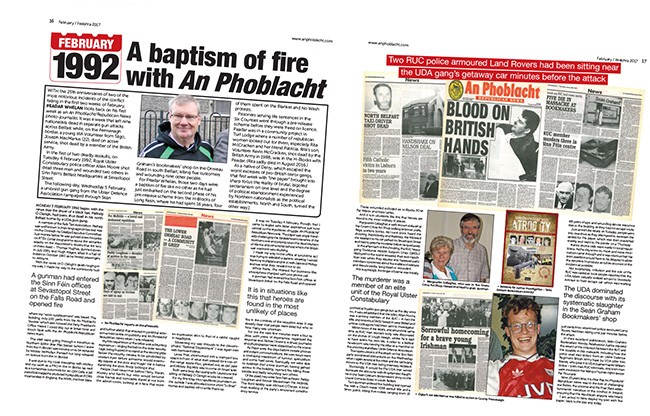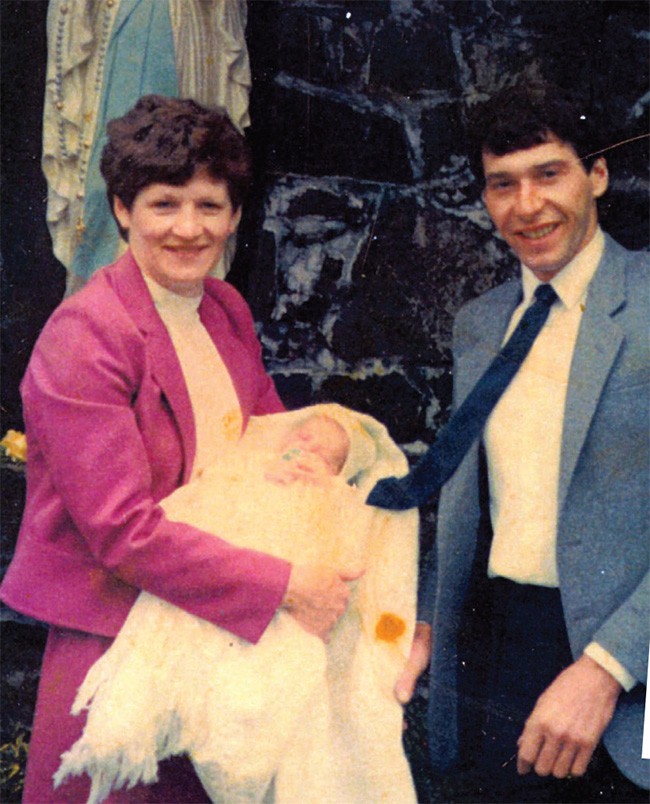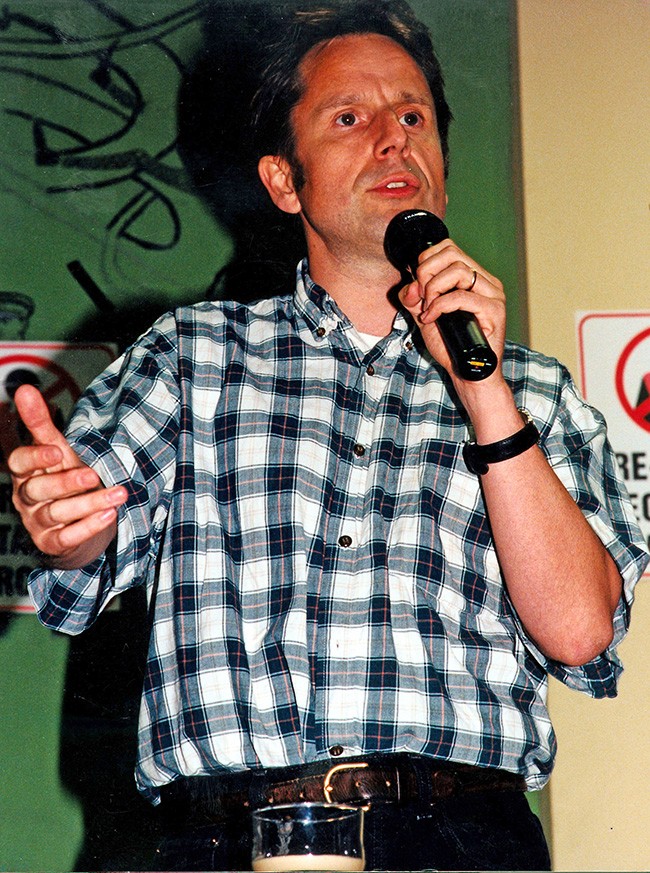1 December 2020 Edition
A journalist’s political education

• Rita McCracken shares a joke with Martin McGuinness as Mary Lou McDonald and Stephen McCracken look on
On my release from the H Blocks after 16 years, I began work with An Phoblacht. As a former life sentence prisoner, writing for the ‘Phoblacht’ was a platform for political work, an extension of the political education I was involved in while in jail. It was about promoting republican ideals and policies as well as challenging the narrative of the struggle, particularly that of the mainstream media and our political opponents.
Writing for this 50th Anniversary edition of the paper, I recall how often in situations where I would be labelled a journalist, I would retort “I’m not a journalist, I’m a political activist who uses the media to further republican politics.”
However, these political aspirations, these ideas that what I would be engaged in high flying political argument, promoting the ideals and vision of the republic with our ideological enemies, came crashing down in the reality of Belfast in February 1992.
In my first week, eight nationalist civilians were gunned down in two separate attacks on the Sinn Féin centre on the Falls Road at Sevastopol Street and in Sean Graham’s Bookmakers on the Ormeau Road. Eleven others were wounded in the shootings which were carried out by an RUC member and a notorious UDA gang based in the Annadale area of South Belfast.

‘A Baptism of Fire’, Peadar’s article in February 2017 that recalled a week in February 1992 that eight nationalist civilians were gunned down
I recalled that week in an article titled ‘February 1992 – A Baptism of Fire’, which was carried in the February 2017 edition which marked the 25th Anniversary of the killings.
In that article, I highlighted the killing of IRA Volunteer Joe McManus who was shot dead by a British soldier in Fermanagh.
Also shot dead by loyalists that week was Padraig Ó Cléirigh an Irish language activist and Black Taxi driver.
And, reading through that 25th anniversary article, I described how I got to know women like Rita McCracken, mother of IRA Volunteer Kevin McCracken killed in action in March 1988, and Patricia Campbell from Turf Lodge who supported me and other life sentence prisoners who were released on license through the North’s ‘Work Out’ scheme.
Both these strong republican women are now dead.
With the reality of these attacks comes the realisation that the political establishments across the North, in Britain, and in the 26 Counties were willing to ignore the British military strategy that we now know and accept as collusion.
And the more and more republicans pointed out that the British military and RUC were facilitating the loyalist death squads in one way or another, the more we were told that our claims of collusion were merely propaganda.
A lot of credit must go to Laura Friel and our other writers who logged so many incidents involving loyalist death squads, listing the activities of the crown forces before and after attacks and seeing the patterns emerge. One all too common example was when a heavy crown force presence in an area would disappear only for a loyalist gun gang to appear.

Kathleen O’Hagan with her husband Paddy
The killing of Kathleen O’Hagan in August 1994 by the UVF is an example of the fundamental nature of collusion and exposes how the RUC campaigned against the family. Kathleen’s husband Paddy was a former H Block prisoner, The RUC continually carrying out raids on their home and sent out a message to loyalists that the O’Hagan family were ‘legitimate targets’.
An Phoblacht travelled to the O’Hagan home in County Tyrone and spoke to local republicans. They brought us to where the ‘getaway’ car was abandoned and speculated that, given the remote nature of the area, their suspicions were that members of the UDR were involved and that they melted into the countryside ‘on patrol’.
Where the story of Kathleen O’Hagan’s killing leads is into the fraught and highly contentious area of legacy and how we deal with consequences of the conflict.
In the years after she was gunned down, two of Kathleen’s five children have died in tragic circumstances. Tomás, the youngest when his mother was shot dead, died in a fire on the family farm. He was seven when he died. Niall was killed in a motor cycle crash in 2008, while, in between in 2002, Paddy died of a massive heart attack.
These children and their remaining siblings were traumatised by the killing of their mother and are ‘victims’ of the conflict.
The British and the unionists want to define ‘victimhood’ in a way that suits their narrative and their hierarchy of ‘victimhood’ excludes this family.
Of course, it was always important for us as activists that we stayed focused on the nature of the Orange State, particularly with the issue of loyalist parades becoming a dominant feature of the North’s politics.
Through our coverage and reporting, we built relationships with people across the North in Portadown on the Garvaghy Road, in Ardoyne, and on the Ormeau Road. In one memorable night on the Ormeau Road, we, amongst many other vigilant residents, sat with the English comedian Jeremy Hardy in the Lower Ormeau Residents offices with the RUC surrounding the building.
Peadar’s picture from 2004 Ardoyne coat-trailing Orange Parade showing the RUC were aggressors
The RUC had imposed a curfew on the area in order to facilitate an Orange Parade the following day. Hardy who was supporting the residents’ objections to the Orange Parade referenced the experience in a Guardian article written in August 1999.
Describing the issue at the core of the marching dispute, Hardy wrote “We are not dealing with competing traditions. We are dealing with expressions of dominance and the reactions of the dominated. The Parades Commission cannot balance the right to humiliate with the right not to be humiliated”.

The late English comedian Jeremy Hardy
If there is one point I would make to finish off and sum up the important role An Phoblacht played in these situations, it would be that around this time I ended up ‘doing the photos’ and was in Ardoyne to cover the annual coat-trailing Orange Parade on its return journey to Ballysillan.
In a stroke of genius, the British deployed the Parachute Regiment to the area and, needless to say, the tension in the area was sky high and unsurprisingly erupted into severe rioting, during which I was hit on the head with a missile!
The cover of that week’s paper carried one of my photos, a young man on the ground as an RUC officer stood over him with his baton raised. Every other media outlet that week pointed the finger of blame on the people of Ardoyne for the trouble, whereas our image exposed the RUC as the aggressors.
A job well done.




